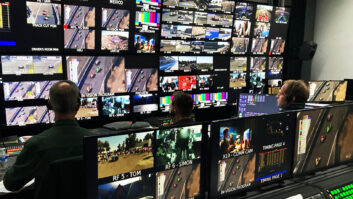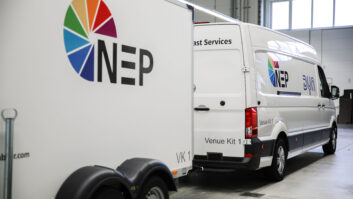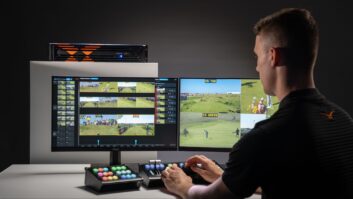Throughout 2020, the sports broadcast industry was largely focused on finding new ways to remotely produce and manage high-quality live events. Partly of out necessity, yet unlikely to stop now, the industry has seen the adoption of technology at a rising speed, for example IP to enable remote production.
Sports broadcasting has been pioneering IP remote production for some time now. However, the primary focus is often placed on the physical media transport, associated considerations around standards, optimum encoding, and protection. This can lead to the critical management layer being overlooked, or at least underestimated. Setting up and configuring equipment is not only time-consuming but also potentially tricky, especially when many IP and multicast addresses are involved. These issues can stand in the way of achieving remote production objectives, i.e. reducing staff onsite or being quick and nimble.
Controlling and monitoring remote production
There is a wide range of requirements that the management layer covers, i.e. tally/UMD management, endpoint parameterisation, scheduling, software defined networking (SDN) control, PTP configuration and monitoring. All of these are complex enough in a contained environment, but they become even more challenging in remote production.
As there are at least two locations involved in remote production (the location where the event takes place, the central facilities and possibly other studios, all connected by a WAN), three distinct “segments” need to be managed individually and together.
Firstly, it is important to ascertain where the various production staff will be located. Most of the equipment will be in the central facility, as sharing resources is one of the benefits sought. However, when it comes to staff, this may not always be possible for logistical reasons. This can create a challenge in terms of workflows and media flow orchestration, as the equipment and the people controlling it will be separated geographically by many miles and technically by a WAN.
Secondly, each of the segments mentioned above will have its own specificities, which will influence how it can be managed.
The WAN connection will typically be based on IP technology, but the control level over the network available to the broadcaster or production company will vary greatly. In some cases, it will be possible to control the path of the signals through SDN to ensure true path diversity. In most situations, though, the network connection will be offered “as-is” by the telco with no option to control flows inside the WAN.
The event site and the central facilities themselves may be based on IP or SDI technology, or indeed a mixture of both. This means the management needs to be flexible enough to manage production seamlessly across technologies, adding further complexity to the challenge.
Another issue is that the setup in the location could be permanent, semi-permanent, or temporary. The less permanent the arrangement, the more dynamic the management needs to be. As mentioned before, the setting up and configuration must be simple as it will probably be carried out by non-specialists onsite. This is where advanced IP address management can play a key role, by simplifying handling of the thousands of multicast addresses required for the multitude of simultaneous audio, video, and data streams.
Of course, total reliability is paramount, as it’s expensive to sort issues out remotely.
Managing the signal flow
When it comes to managing the actual flows of signals, various options are available.
The simplest one is a static set-up, where the central facilities and remote locations are effectively “married”. Changing or expanding the setup, reducing or adding signals can be time-consuming and costly though. NMOS IS-04/IS-05 is likely to be required to enable the join-requests to be carried out.
The next option is to add an orchestration and SDN control capability to enable the dynamic set-up of streams across the WAN. This makes it easier to add or remove streams and enables multiple locations to be connected dynamically through the same gateways. The local networks (onsite and in the central facilities) remain statically configured.
It is also possible to bring in one overall management system, controlling the network end-to-end. This allows all streams to be connected dynamically, providing full redundancy for the video and audio signals, and for data. This solution is perfect for remote production but has limitations in the context of a distributed production; as the management is centralised, the individual locations cannot easily operate independently.
This leads to a final model, which involves a federated management, i.e. separate instances of the management system in each location, collaborating together to manage the flows end-to-end. Not only does this give more flexibility in managing the locations both independently and together, but also provides additional resilience by distributing the management responsibility.
Realising remote production benefits
There are many benefits remote and distributed production can bring to broadcasters, from increased agility to lower costs. Developing a strong infrastructure is vital in supporting the production. It is also the most complex aspect which can potentially bring the costs up if done wrong. If that were to happen, it would significantly reduce or even negate the benefits of the remote or distributed production altogether. However, with the right approach, systems and expertise, media network management can create an environment in which remote locations can be considered an extension of the central facilities, with all the benefits realised and the production values unmatched.







